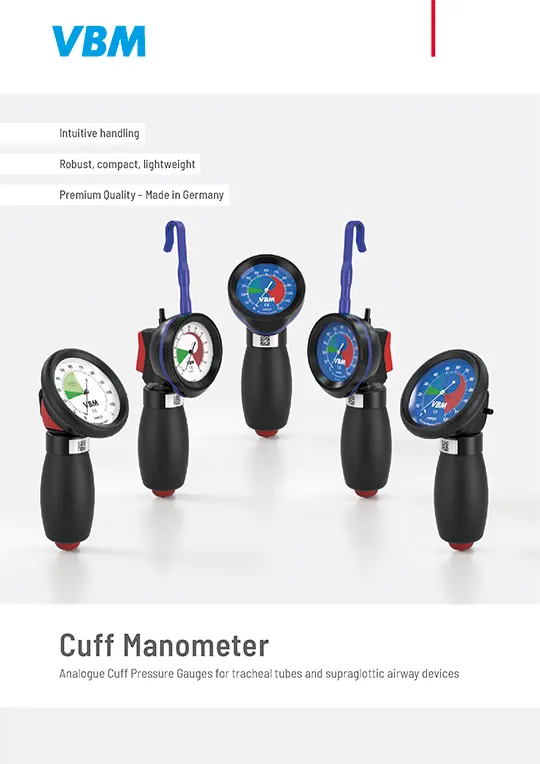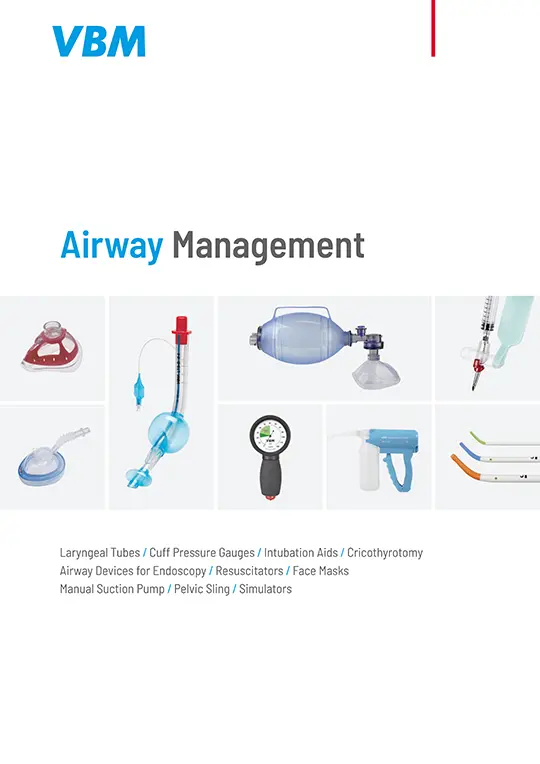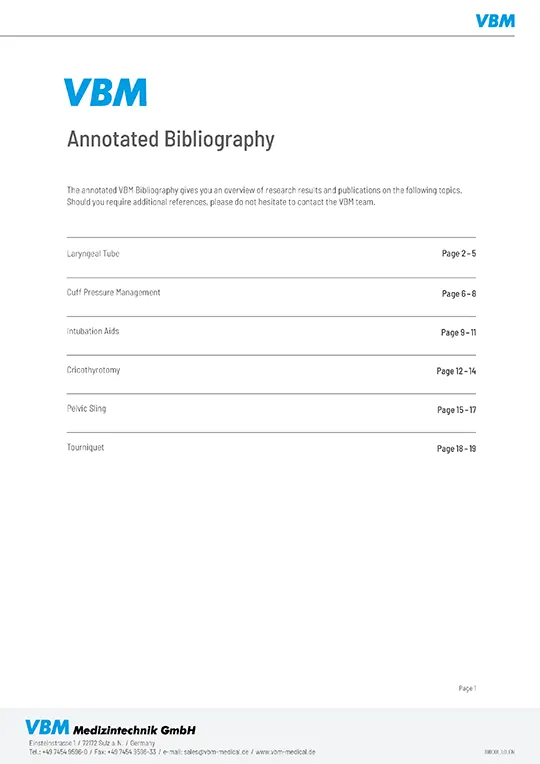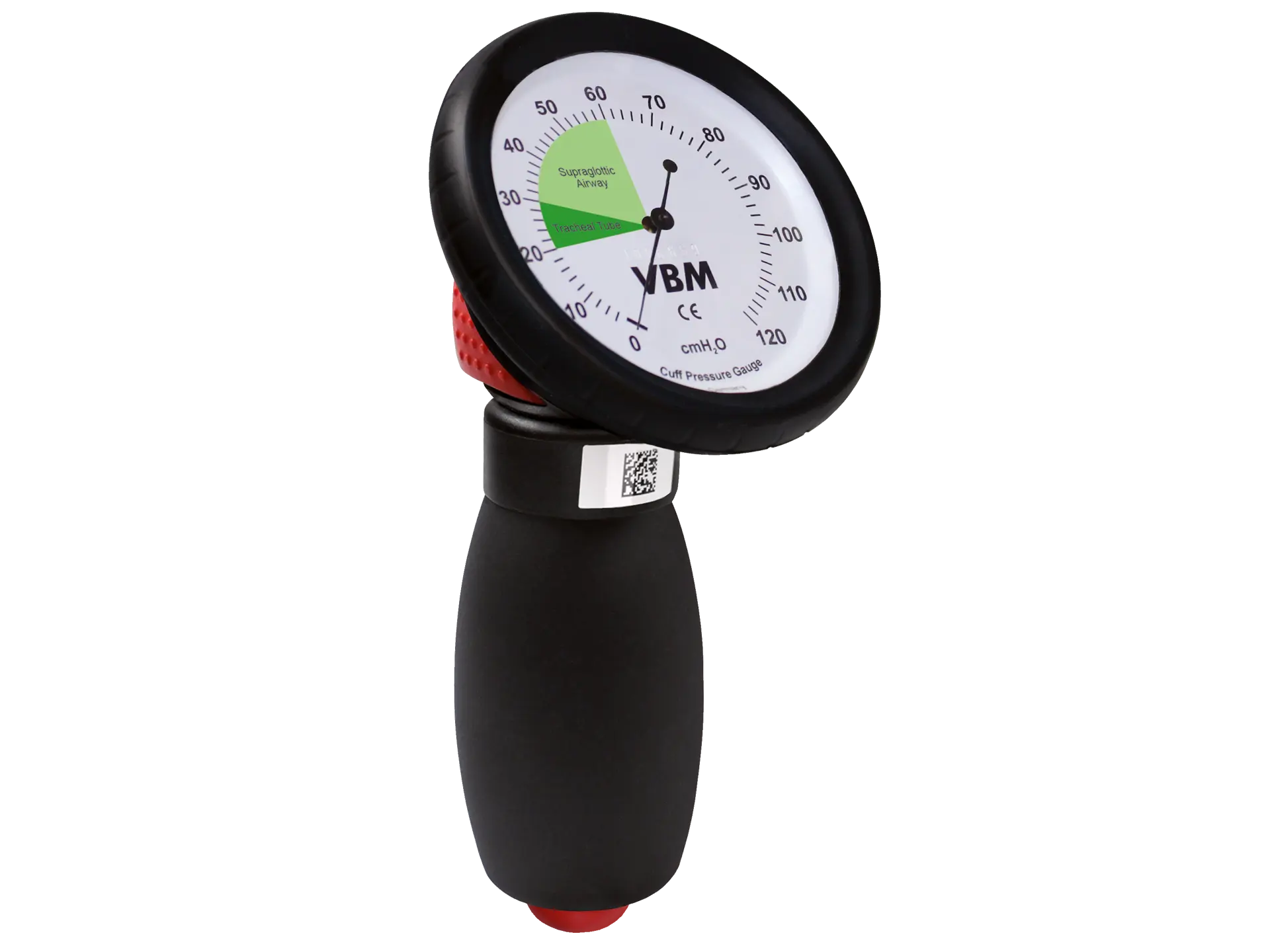
Cuff Manometer
Analogue cuff pressure gauges for tracheal tubes and supraglottic airway devices
Intuitive handling
Robust, compact, lightweight
Premium Quality – Made in Germany
Cuff pressure gauges are used to adjust and control the pressure of tracheal tube cuffs and cuffs of supraglottic airway devices. The ergonomically designed cuff pressure gauges are compact, robust and portable and are characterised by their accuracy and precision. The analogue system is independent from any energy source and therefore no power supply or batteries are required.

——Models
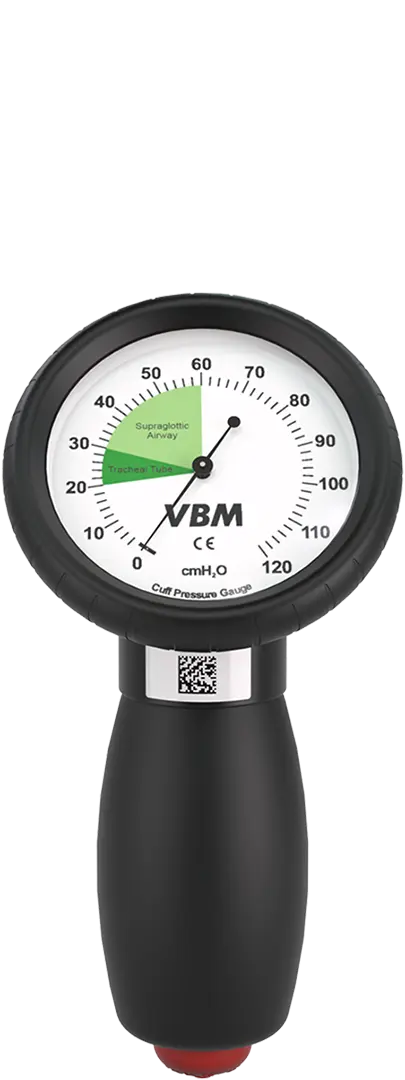
Universal
- Pressure range 0 – 120 cmH2O
- Scale Ø 68 mm
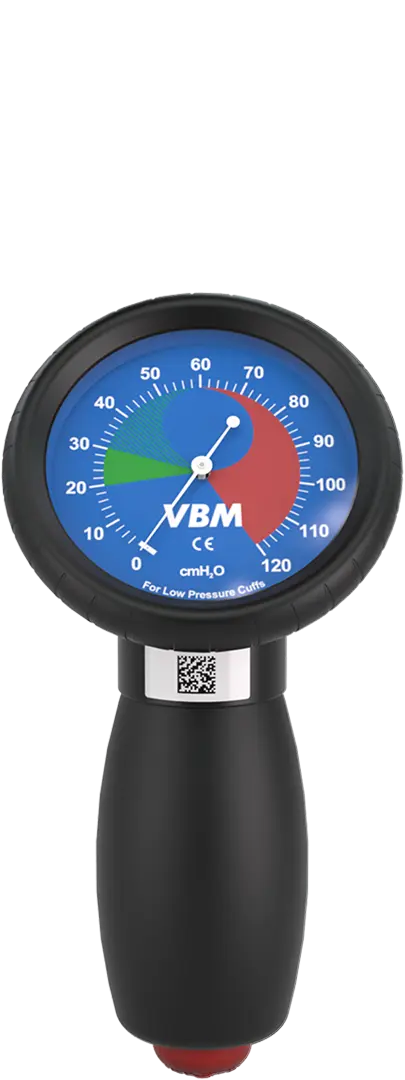
Monitor
- Pressure range 0 – 120 cmH2O
- Scale Ø 68 mm
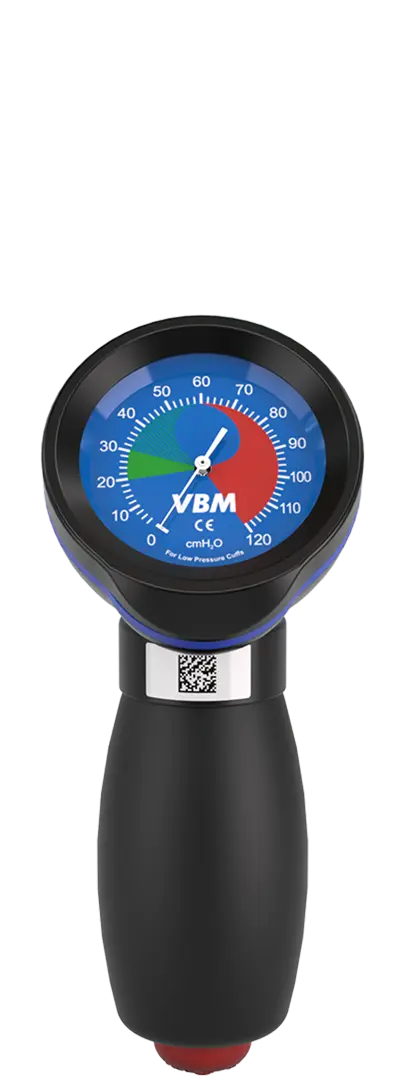
- Pressure range 0 – 120 cmH2O
- Scale Ø 50 mm
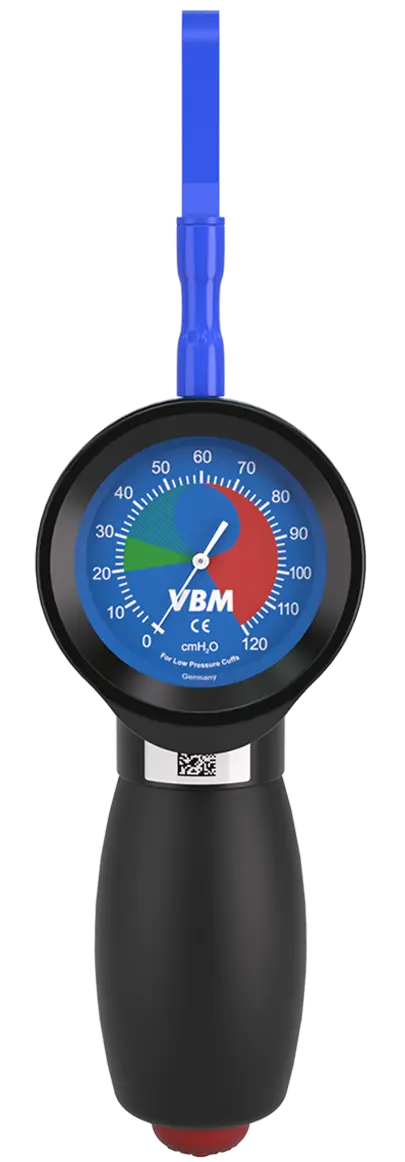
Sensitive
- Pressure range 0 – 120 cmH2O
- Scale Ø 50 mm
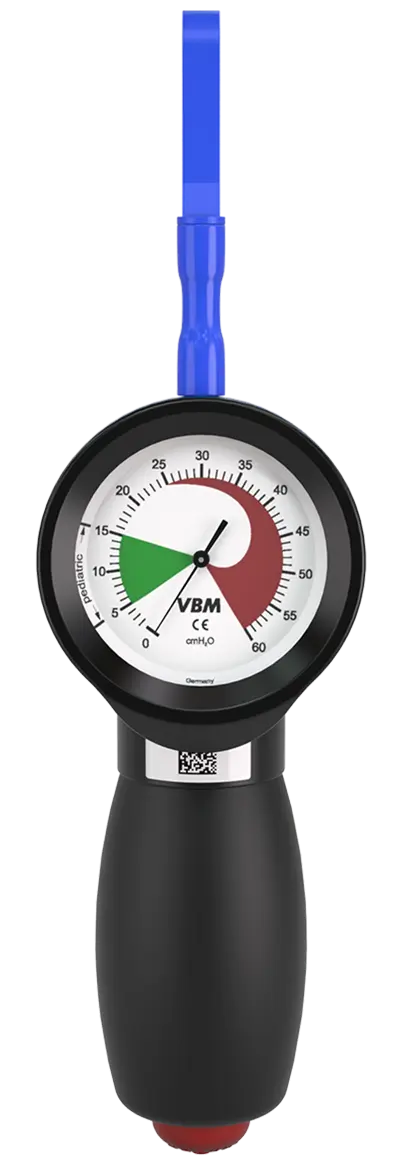
Pediatric
- Pressure range 0 – 60 cmH2O
- Scale Ø 50 mm
——Features
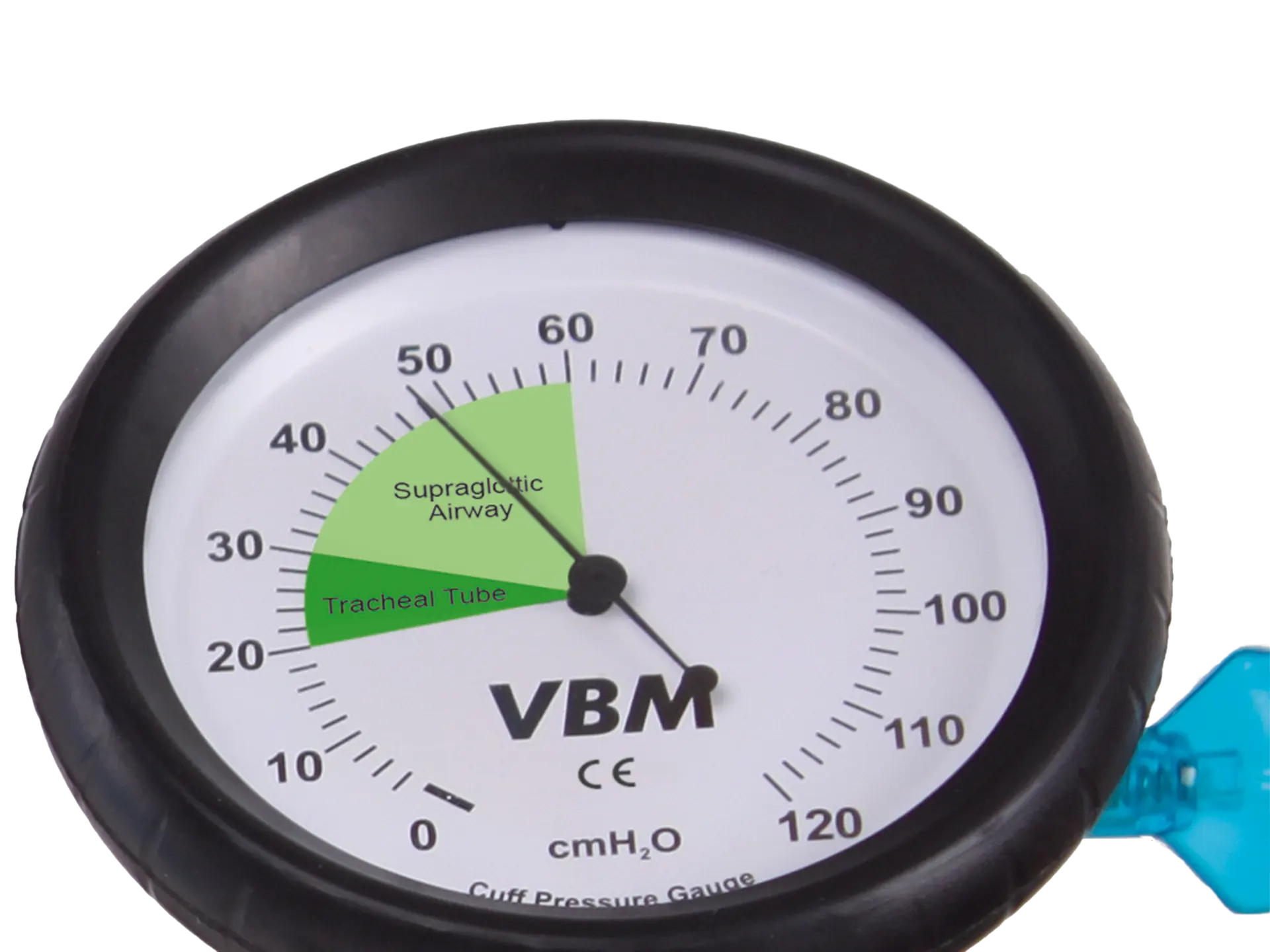
Scale
The colour coded areas on the scale help to display the ideal pressure to maintain tracheal mucosal capillary blood flow.
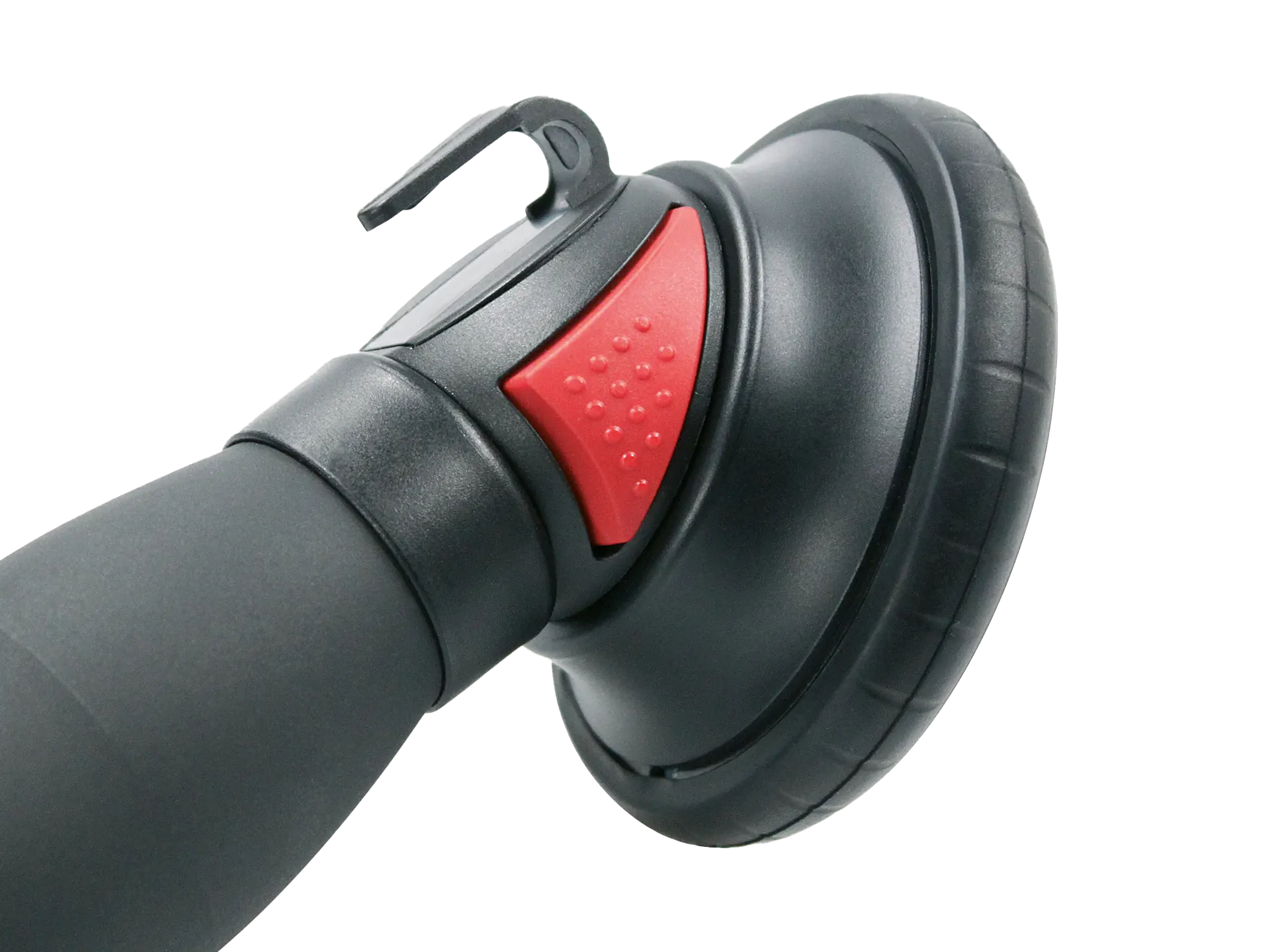
Model Universal, Monitor & Pocket
On the back side of the device.
Luer connection for attachment of tracheal tubes or supraglottic airway devices
On the right side of the device.
Release Valve for pressure adjustment
On the left side of the device to activate wit the thumb.
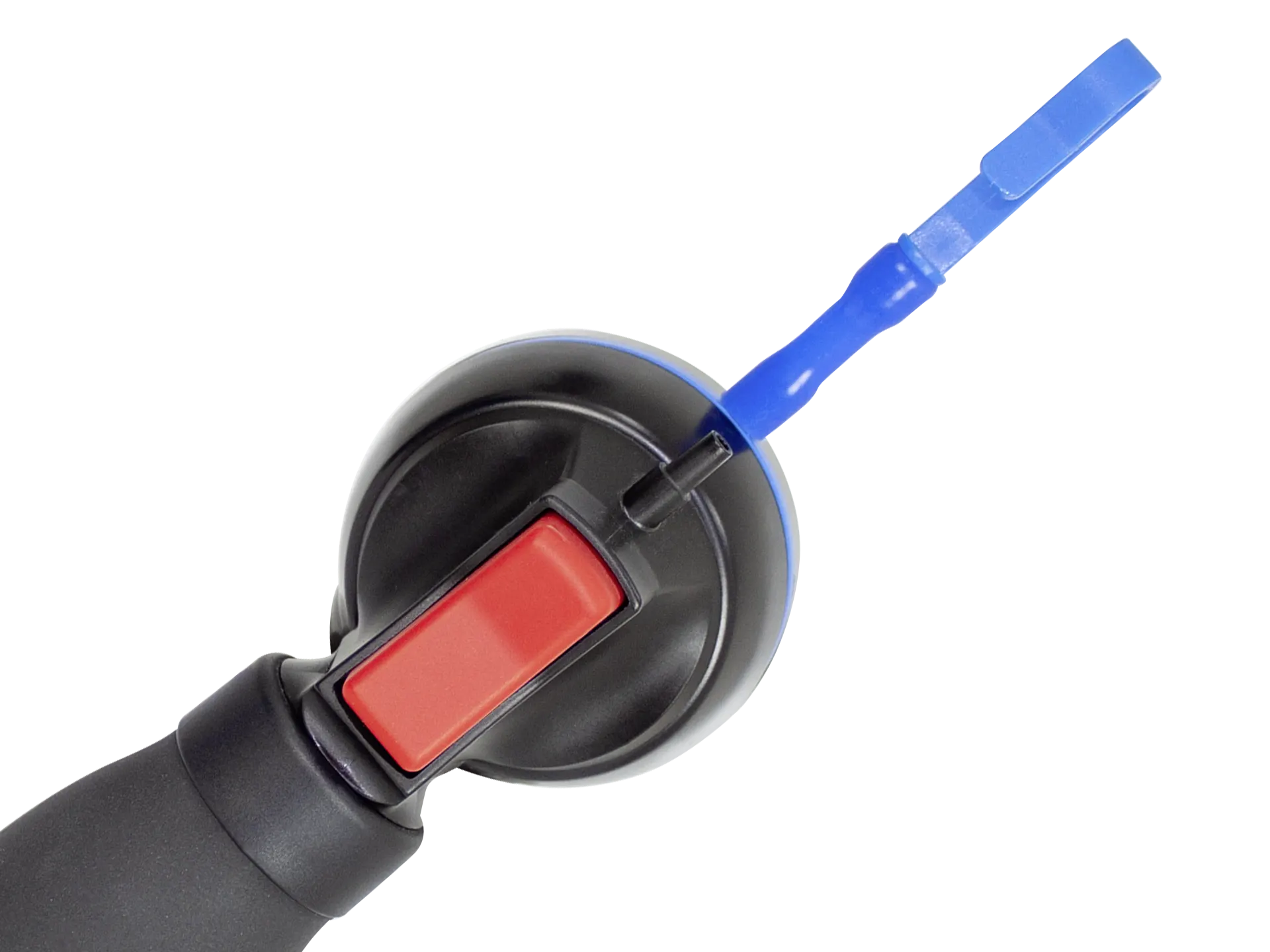
Model Sensitive & Pediatric
Hook for fixation
On the top side of the device.
Luer connection for attachment of tracheal tubes or supraglottic airway devices
On the top side of the device.
Release Valve for pressure adjustment
On the back side of the device to activate with the index finger.
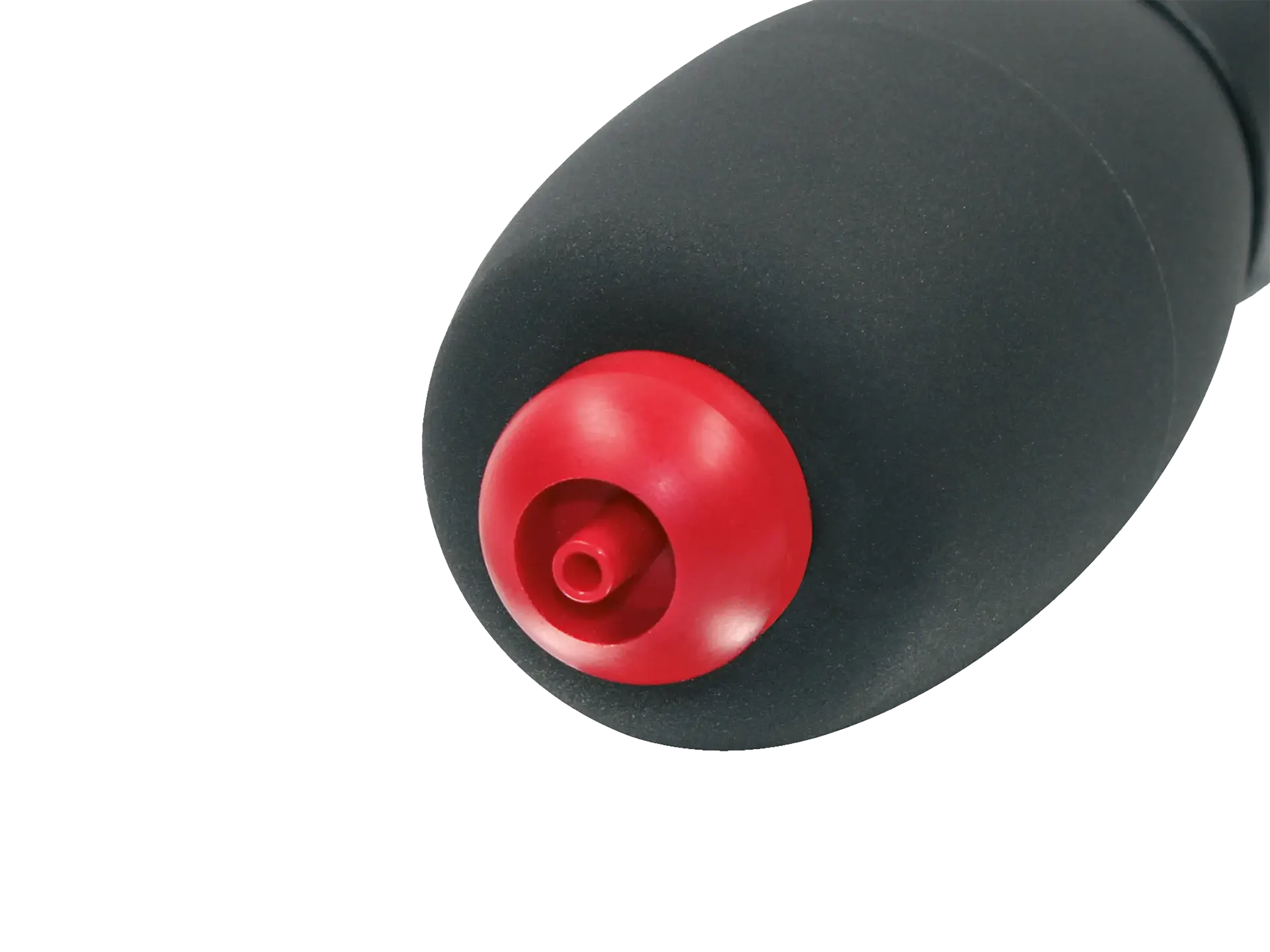
Bulb for cuff inflation
With vacuum valve for complete emptying of the cuff.
——Use with tracheal tube
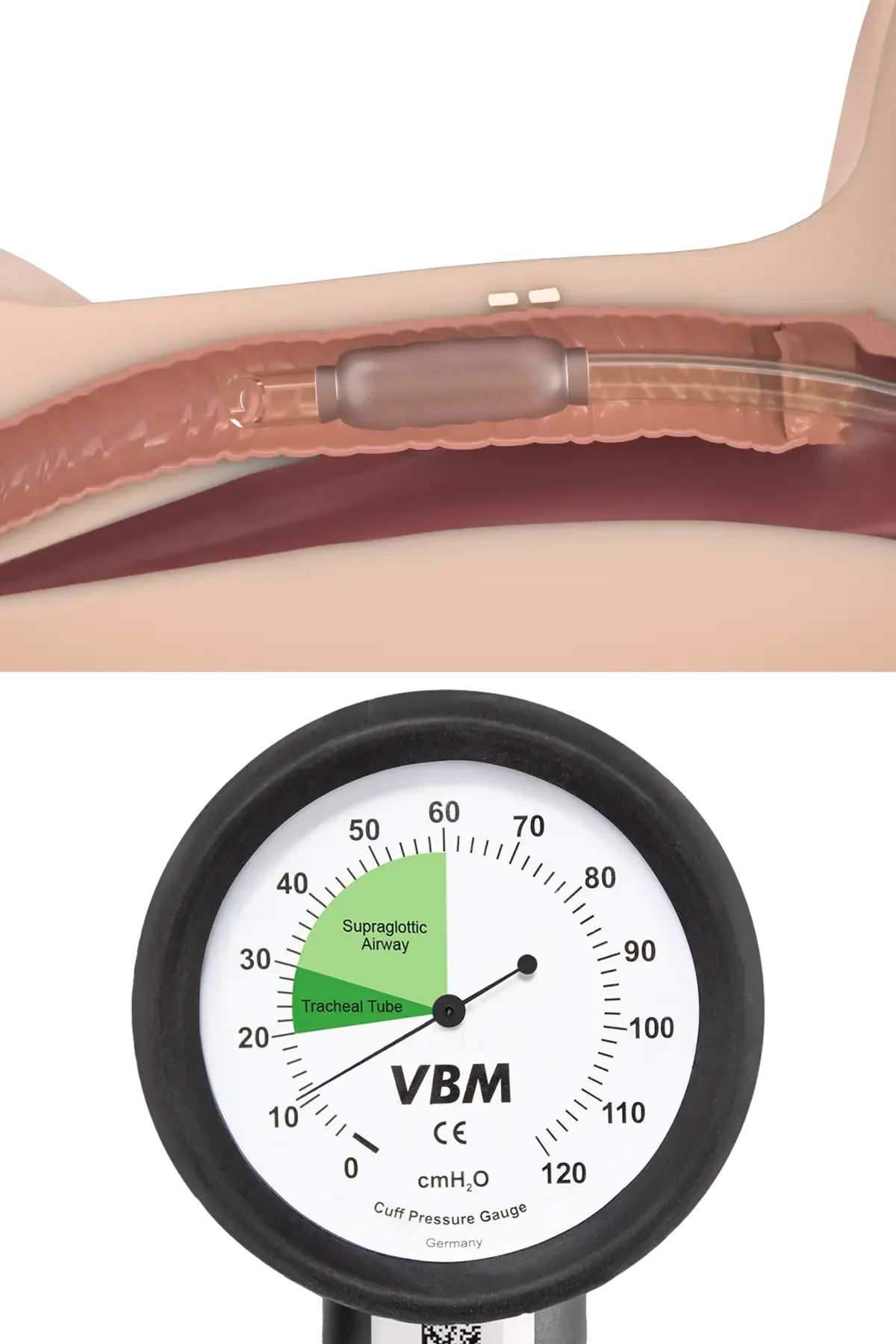
Low cuff pressure is associated with complications such as e. g. micro-aspiration of potentially infectious secretions and the risk of ventilator-associated pneumonia.
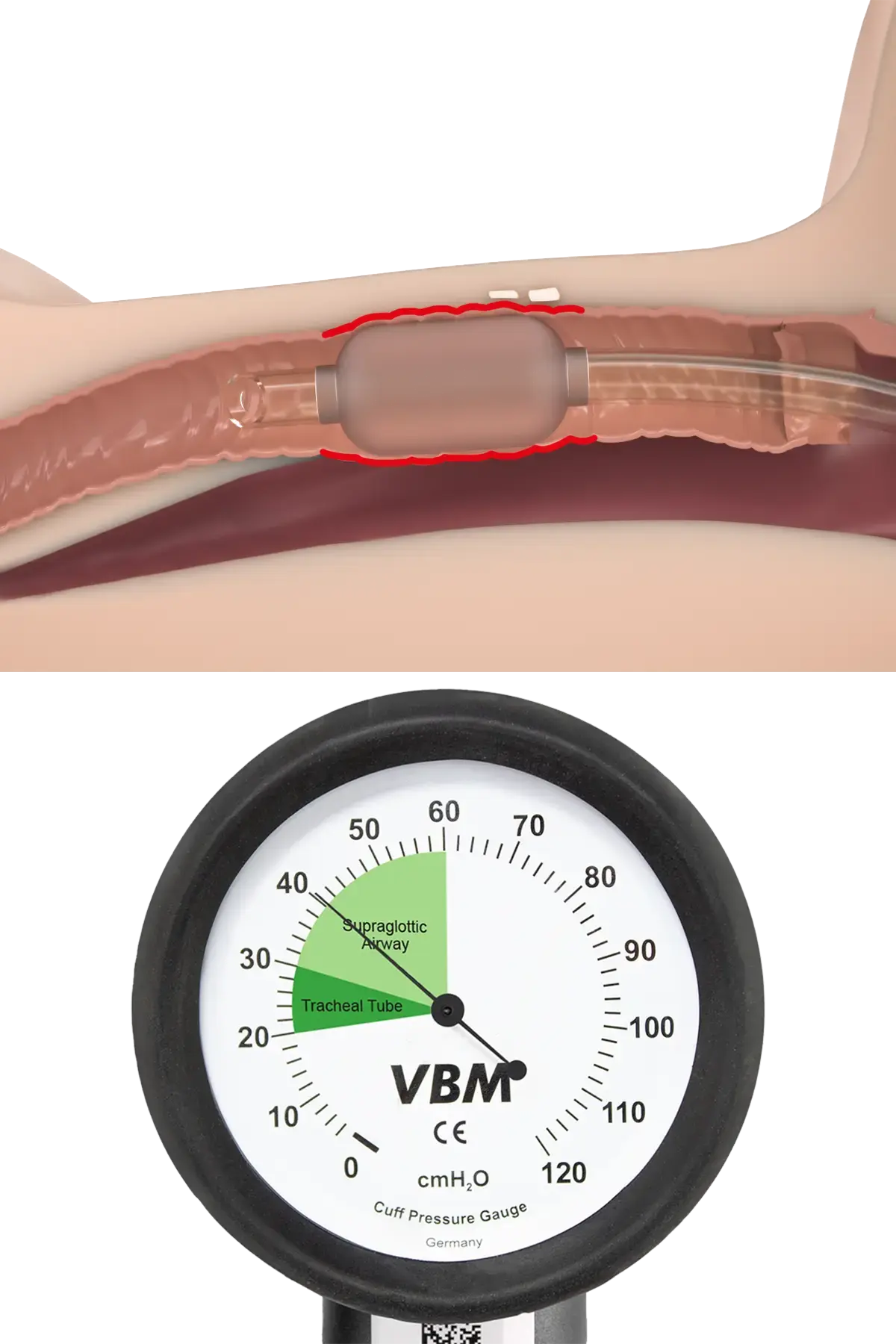
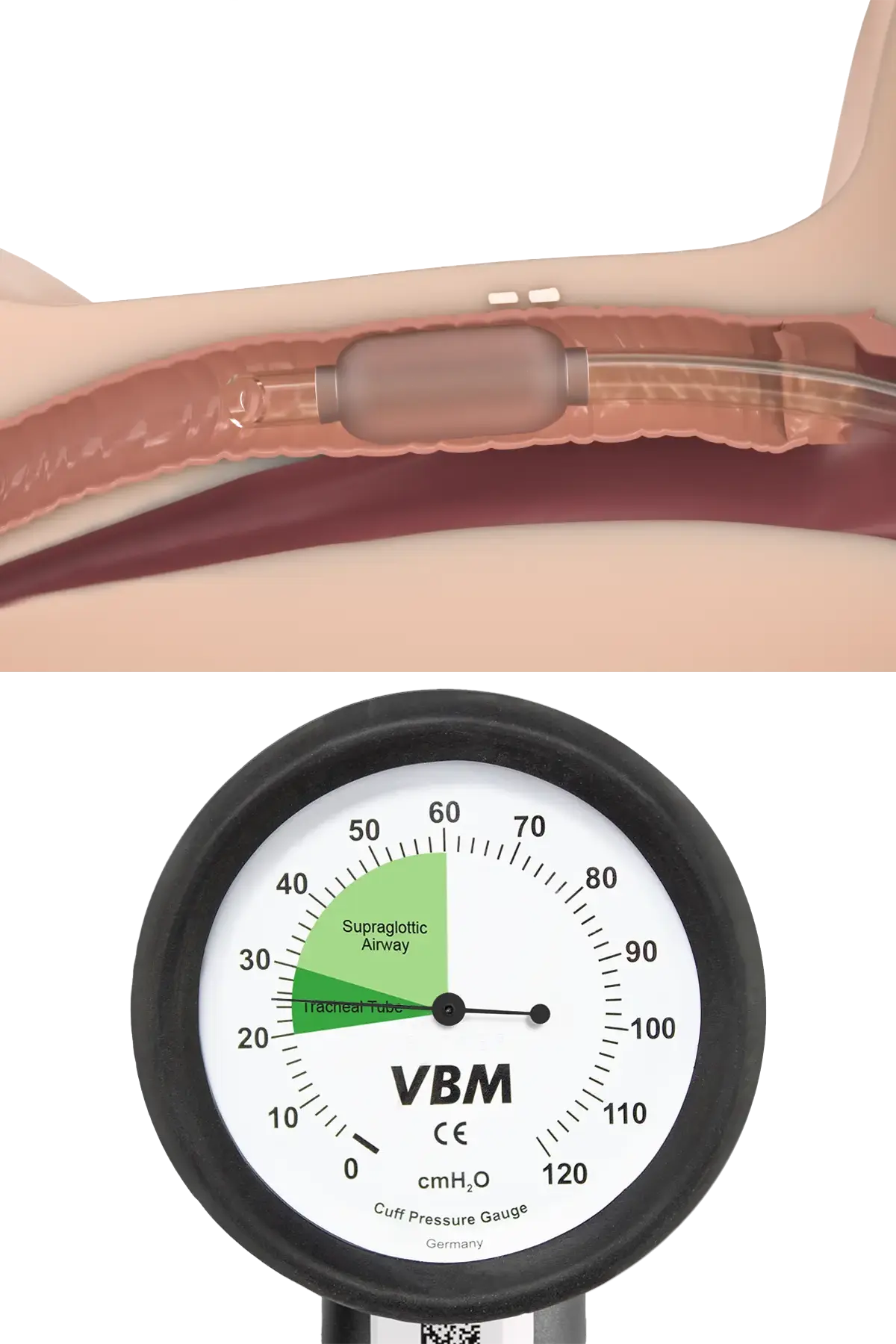
For tracheal tubes in adults a cuff pressure of 20 - 30 cmH2O is recommended to maintain tracheal mucosal capillary blood flow.
——Application Video
——Key Points Cuff Pressure Management
There is convincing evidence that a continuous cuff pressure measurement (e. g. on supraglottic airway devices) leads to a significant reduction of postoperative complications.
- M. Hensel et al., “Kontinuierliche Cuff-Druck-Messung bei Larynxmaskennarkosen - Eine obligatorische Maßnahme zur Vermeidung postoperativer Komplikationen” Anaesthesist, vol. 65 pp. 346-352, 2016.
Ischemia of the tracheal mucosa can be avoided by consistent cuff pressure monitoring.
- P. Sultan et al., “Endotracheal tube cuff pressure monitoring: a review fo the evidence” Journal of Perioperative Practice, vol. 21 pp. 379-386, 2011.
Cuff pressure monitoring is an important part of a bundle of measures to prevent VAP.
- L. Lorente et al., “Continuous endotracheal tube cuff pressure control system protects against ventilator-associated pneumonia” Critical Care, vol. 18, pp. 1-8, 2014.
The cuff pressure of tracheal tubes in adults must be max. 30 cmH2O.
- N. Puthenveettil et al., “Effect of Cuff Pressures on Postoperative Sore Throat in Gynecologic Laparoscopic Surgery: An Observational Study” Anesthesia: Essays and Researches, vol. 12, pp. 484-488, 2018.
——Additional Information
——Related Topics & Products
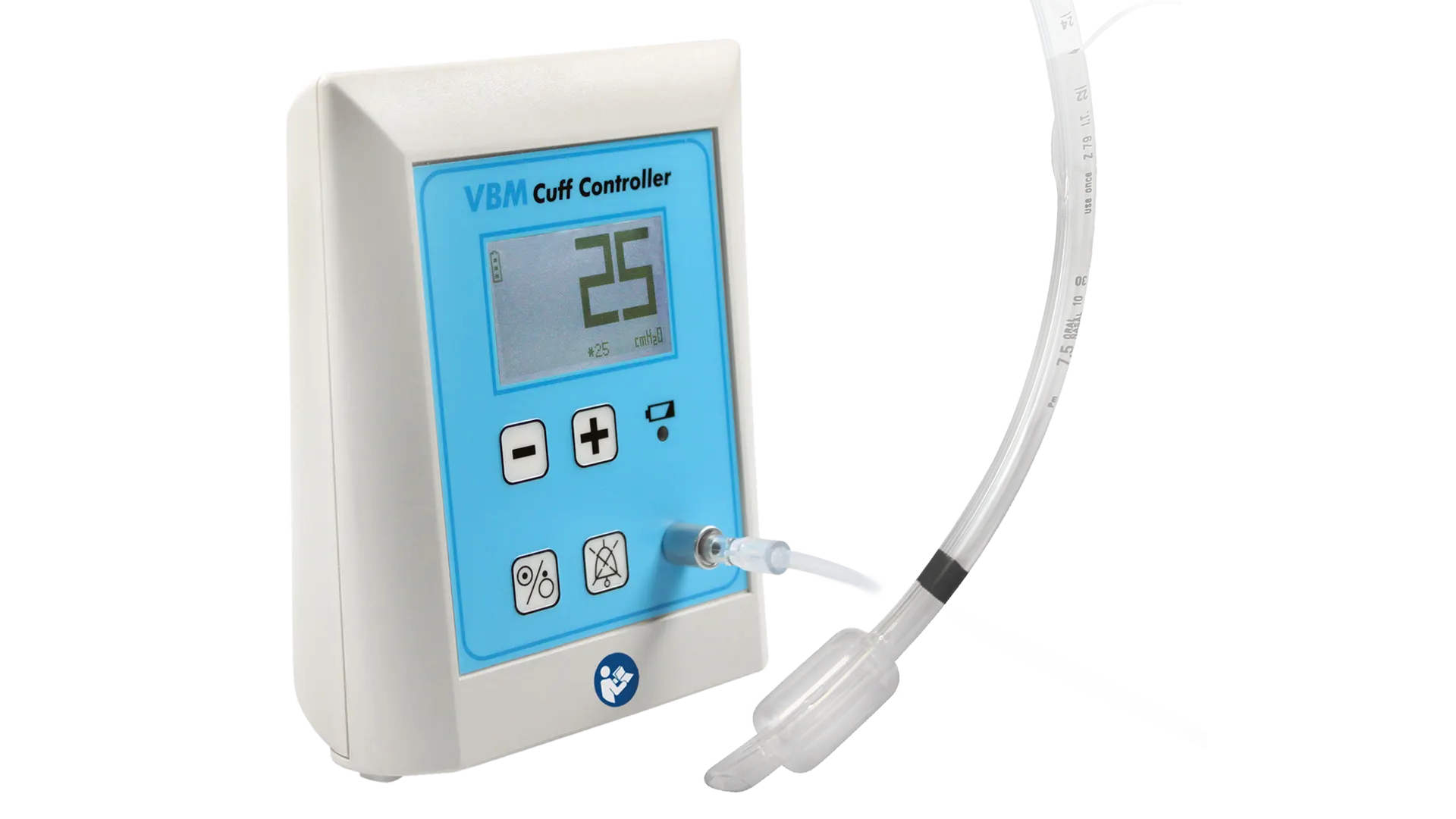
Cuff Controller
WEB001_PID-01-01-01_AB_EN

